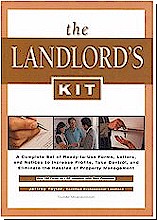Title: Housing Market Revealed 2006 - Is The Party Over For Real Estate? Author: Derek Polcyn Article: The international housing market has been red hot since 2000. The original catalyst for the rise in real estate prices was twofold. Firstly, due to the low interest rate environment, the housing market benefited from a pent-up demand from renters who, realizing that mortgage payments could be as low as rent, decided to purchase their first homes. Secondly, after the equity bubble burst, the price gains in the housing market made many people believe that home ownership was a safe form of investment. The price of an asset depends not only on its financial fundamentals but also on qualitative factors (e.g., the amount of speculation, sentiment of market participants, competition with other assets, etc.). Fundamentals and Cyclicality Prior to 2000, the real estate market and the economy were always cyclical. For instance, the US housing prices tended to weaken as the GDP and employment prospects declined, particularly during the recessions of 1980 and 1990. The economic downturn of 2000-01 defied many predictions by having the opposite impact on real estate prices. Over the past five years, real estate prices have increased approximately 10%, outperforming equities by a wide margin. Historically, real estate has been viewed by many as a good hedge against inflation. During the last five years however, real estate prices have exceeded the rate of inflation by a gross margin. Given the significance and size of the U.S. real estate market, our analysis will focus on U.S. real estate, which is currently quite representative of markets around the world. U.S. Real Estate In 2005, America's real estate boom was strong, with prices up by 13%. But there were signs that the market was weakening. Sales of existing homes fell this January to the lowest in nearly two years. Meanwhile, the number of unsold homes rose to the highest level since 1998. In addition, new homes continue to be built at the fastest pace since 1973. In other words, while the supply of housing is at the highest level, demand for homes has fallen dramatically, rendering a downward price adjustment inevitable. Due to the low interest rate environment, affordability ratios are still within historical ranges, although they're approaching a 14-year low. On the other hand, other ratios that disregard the interest rate level (e.g., home price to rent, home price to disposable income) appear to have escalated. The Supply / Demand Imbalance In general, we see no evidence that the supply factors are positively affecting the prices. For example, the rate of population growth has not increased significantly and the supply of land available for housing remains largely unchanged. In fact, research by Goldman Sachs reveals that U.S. residential investing is at the highest level in 40 years, yet new household formation is growing at its slowest rate. Based on the experience of the last few years, we may see a fundamental shift in sentiment, favoring home ownership. Up to now, most of the baby boomers nearing retirement have decided against downsizing their homes and opted for the financial security of their current houses instead. Other Asset Classes Financial exposure to real estate is generally a good thing as long as it is a reasonable proportion of one's assets, and the investment environment is favorable (e.g., not in the midst of a bubble or heading into a decline). In a diversified portfolio, real estate investments can be a very good diversifier due to relatively low correlations with other asset classes. Contrary to popular belief, holding a diversified portfolio of various asset classes (with a large equity exposure) has been a much better investment than buying a house during the last 30 years. For instance, a dollar invested in real estate in 1975 would grow to $6.07 while it would turn into $36.14 if invested in the S&P 500. However, in calculating the exact returns one must factor in taxation and deductibility of interest rates. The Failure of Risk Management As rising house prices lift the market value of collateral on banks' existing loans, banks are willing to lend more, pushing prices higher. In effect, banks have an incentive to lend when property prices are rising, and to pull out when prices fall, leading to extended boom and bust cycles. For the past few years a number of researchers have pointed to the non-sustainability of the housing market, comparing it to the high-tech bubble of 2000. Barring any fundamental change, the primary question remains why real estate prices have defied this historical market relationship for so long, and whether will they will ever reach the tipping point. InvestWELLFinancial.com The full E-book is located at: http://todaybooks.com/product_info.php?products_id=127 About the author: Derek Polcyn, CFA, FRM, CIM, M.A. (Econ.) President and CEO of InvestWELL Financial. Derek has been involved in capital markets for over 12 years. He worked as an investment analyst at several large North American financial institutions for over 7 years and taught finance at college.
|
